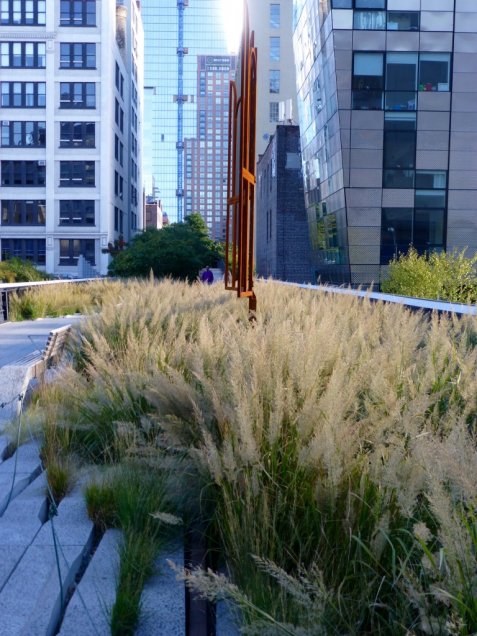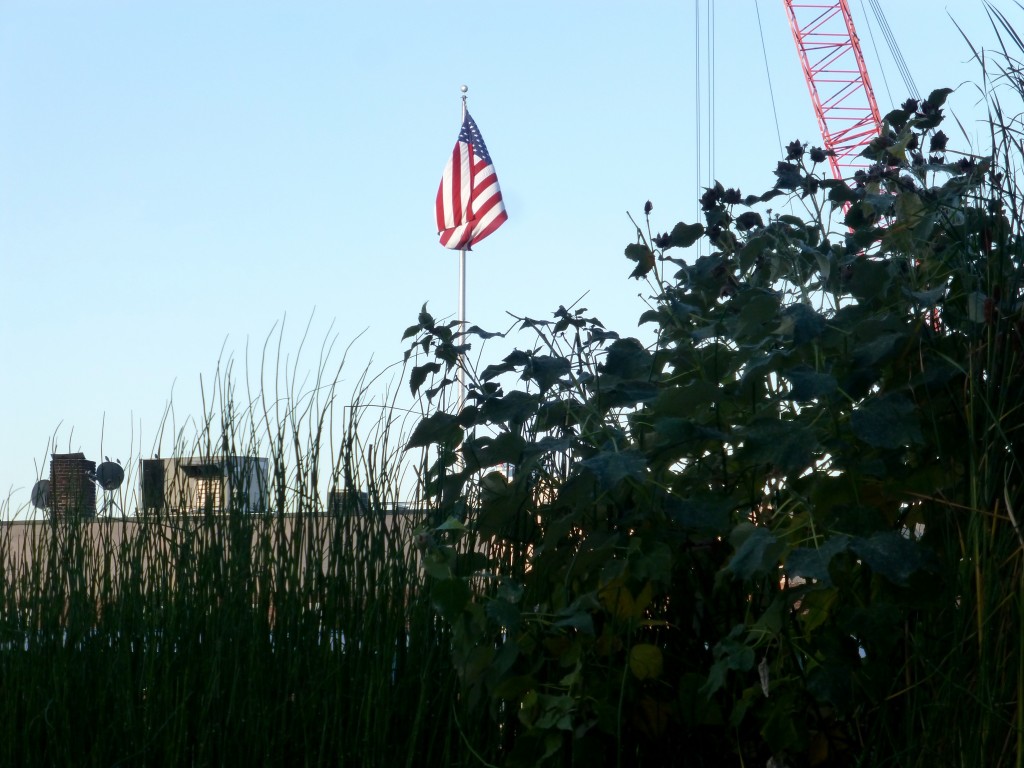 Every twenty years or so landscape design puts something truly revolutionary into the public domain. For instance The Landschaftspark in Duisburg-Meiderich, Germany, designed in 1991 by Latz + Partners. Set in an abandoned coal and steel production plant, the concept for this site was to embrace the industrial past and preserve as much of it as possible. The living green walls of Japan and Paris are another, as is the climbing-plant-draped massive pergola of Zurich’s MFO Park. In the way that the rag trade leaps on a Gualtier catwalk design and deconstructs and re-sews for shallower pockets, these landscape influences percolate down. They affect the way we look at things, the plantings we choose and our approach to nature. All of us garden makers are moulded by change and it is a good idea to keep a close eye on innovation and the High Line is my choice of the day. It has spurred much copycat action and makes wannabe town planners foam at the mouth.
Every twenty years or so landscape design puts something truly revolutionary into the public domain. For instance The Landschaftspark in Duisburg-Meiderich, Germany, designed in 1991 by Latz + Partners. Set in an abandoned coal and steel production plant, the concept for this site was to embrace the industrial past and preserve as much of it as possible. The living green walls of Japan and Paris are another, as is the climbing-plant-draped massive pergola of Zurich’s MFO Park. In the way that the rag trade leaps on a Gualtier catwalk design and deconstructs and re-sews for shallower pockets, these landscape influences percolate down. They affect the way we look at things, the plantings we choose and our approach to nature. All of us garden makers are moulded by change and it is a good idea to keep a close eye on innovation and the High Line is my choice of the day. It has spurred much copycat action and makes wannabe town planners foam at the mouth. 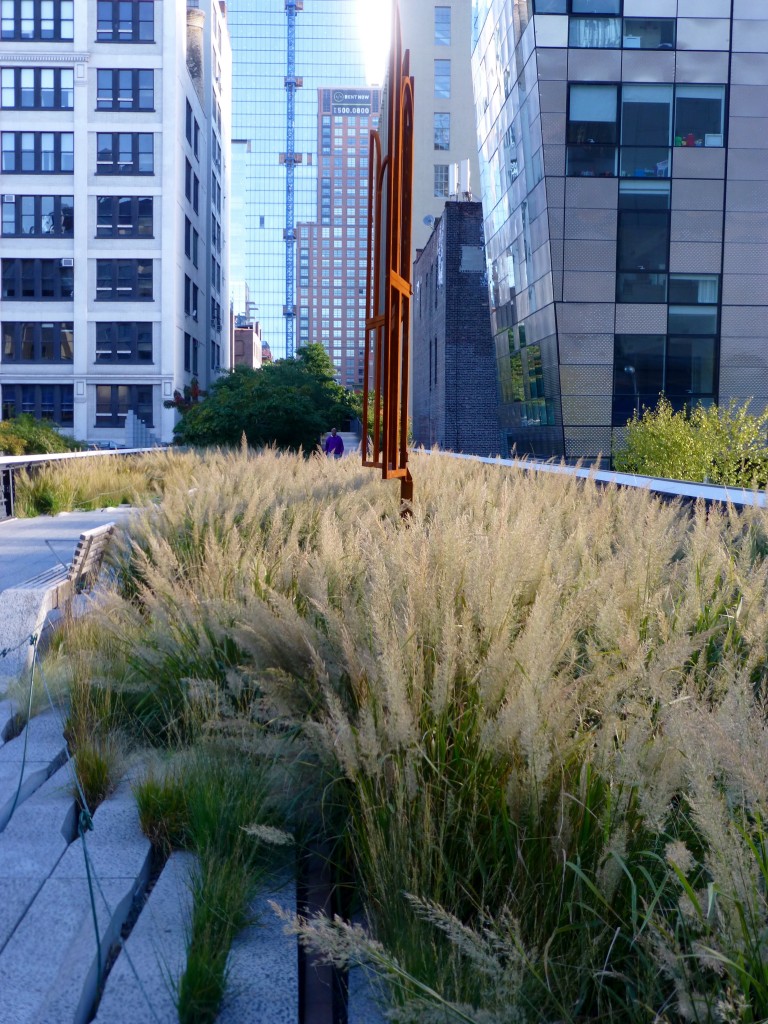 However, to the High Line and NYC. This was a rusty high rise railway line built to carry animal carcases and other freight in from ships unloading at docks on the Hudson to warehouse and industry. Long redundant, it was due for demolition: a site of dereliction, seeded with native wind-blown plants and household escapes. Morphing into a lost urban space given over to the graffiti artist and park cour students, it had its’ fans and an affective pressure group. Things happen fast in NY, the line was saved and funds raised. A firm of Landscape Architects James Corner Field Operations commissioned a planting plan from the ubiquitous Oudolf. The brief was to come up with a plant mix that looked as much like the old spontaneous flora as possible. It should also be colourful and ornamental. The mix he developed was approximately one-half native species with a heavy reliance on shrubs and grasses. This echoes the perennial-rich grasslands that establish on abandoned agricultural land throughout the US.
However, to the High Line and NYC. This was a rusty high rise railway line built to carry animal carcases and other freight in from ships unloading at docks on the Hudson to warehouse and industry. Long redundant, it was due for demolition: a site of dereliction, seeded with native wind-blown plants and household escapes. Morphing into a lost urban space given over to the graffiti artist and park cour students, it had its’ fans and an affective pressure group. Things happen fast in NY, the line was saved and funds raised. A firm of Landscape Architects James Corner Field Operations commissioned a planting plan from the ubiquitous Oudolf. The brief was to come up with a plant mix that looked as much like the old spontaneous flora as possible. It should also be colourful and ornamental. The mix he developed was approximately one-half native species with a heavy reliance on shrubs and grasses. This echoes the perennial-rich grasslands that establish on abandoned agricultural land throughout the US. 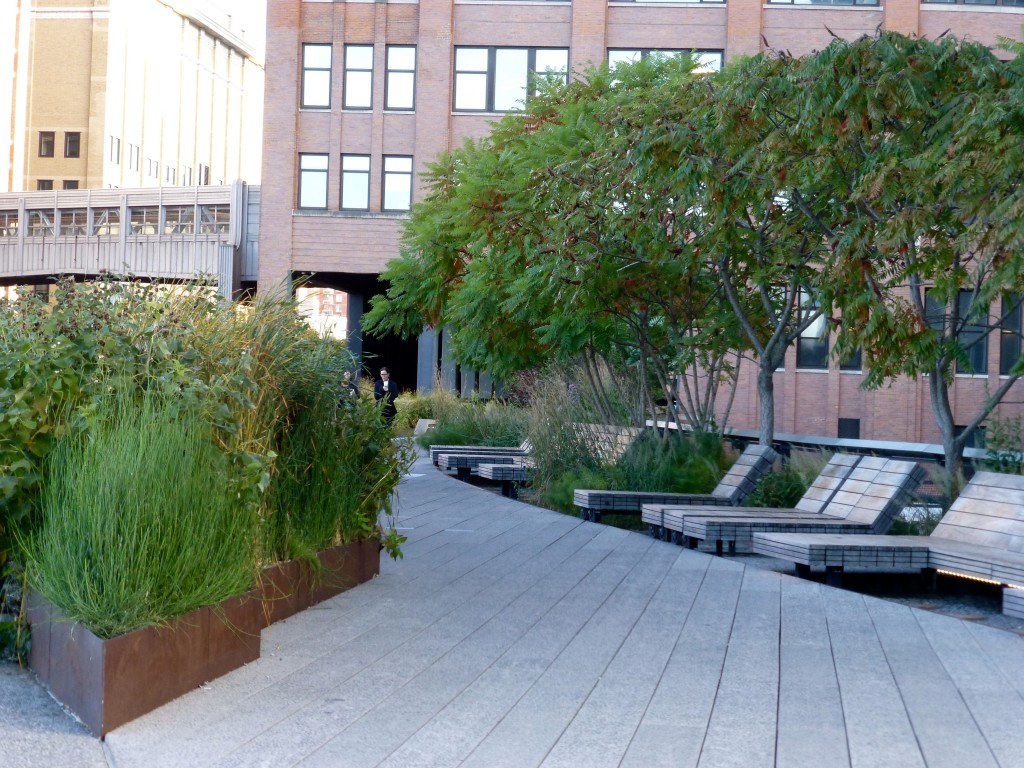 The native flora of America add up to something in the region of 17,000 vascular plants that flourish and grow in all the different climates and terrain that spread across this large continent. We, by contrast, have less than 3,000 native species. It is not surprising that we have begun to borrow very heavily from the American palette of meadow plants. They have been brought over to Britain and bred up into major cultivation, with a new repertoire of plants becoming familiar: veronicastrums, eupatoriums and sanguisorbas amongst them. The knock-on effect of this is the growing popularity of late season perennials that are a far cry from the nostalgic cottage garden plantings of my childhood. On the High Line in late summer there is plenty of colour - with a good deal of yellow presented by Rudbeckias, Heleniums and Helianthus - all natives of East coast woodland edge. Then there are the familiar cone-headed flowers of the Echniceas flowering in pink and white abundance. Later in the season, the grasses take over, weaving a flowery grid through the desiccating perennial flowerheads.
The native flora of America add up to something in the region of 17,000 vascular plants that flourish and grow in all the different climates and terrain that spread across this large continent. We, by contrast, have less than 3,000 native species. It is not surprising that we have begun to borrow very heavily from the American palette of meadow plants. They have been brought over to Britain and bred up into major cultivation, with a new repertoire of plants becoming familiar: veronicastrums, eupatoriums and sanguisorbas amongst them. The knock-on effect of this is the growing popularity of late season perennials that are a far cry from the nostalgic cottage garden plantings of my childhood. On the High Line in late summer there is plenty of colour - with a good deal of yellow presented by Rudbeckias, Heleniums and Helianthus - all natives of East coast woodland edge. Then there are the familiar cone-headed flowers of the Echniceas flowering in pink and white abundance. Later in the season, the grasses take over, weaving a flowery grid through the desiccating perennial flowerheads. 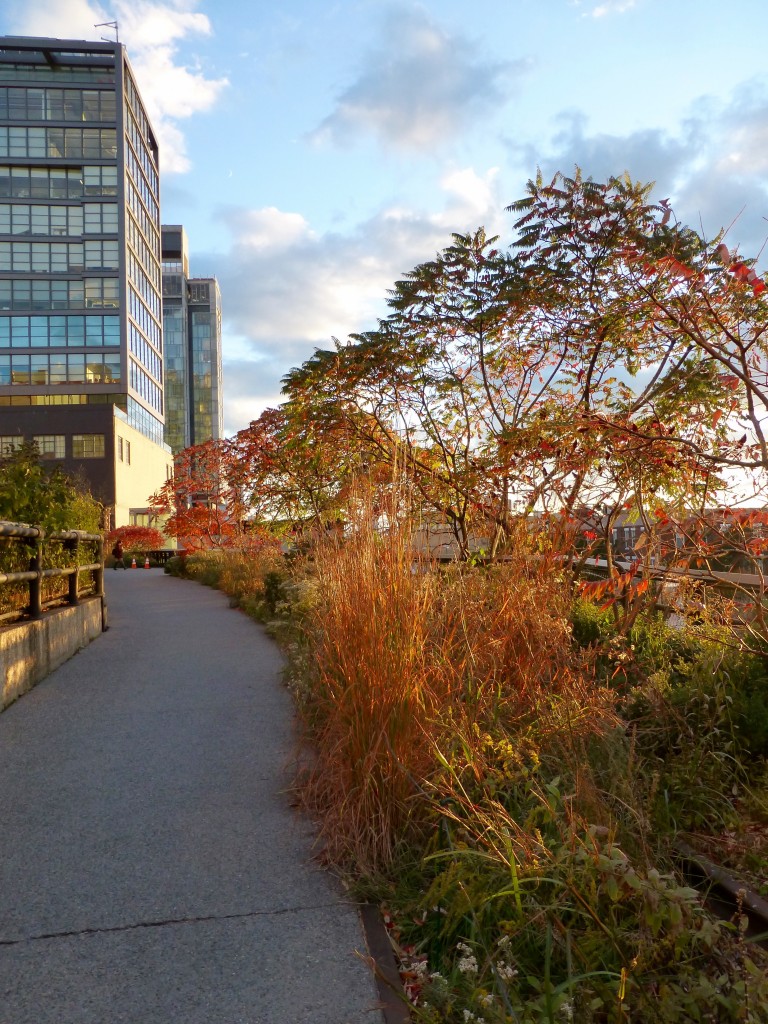 Other areas are planted with a shrub and perennial combination that mimics the next stage of the succession process in plant establishment. Grasses give way to woody plants which take their nutrients and shade them out. The design follows a planting pattern where open meadow blends into a semi open woodland. This gives onto a fuller woodland area of dense, small trees with underplanting to envelop the visitor. It lends itself to winter structure and vibrant autumn leaf colour. Sumachs and multi stemmed snowy mespilus show attractive stems in deep winter. This elevated walkway runs between - and though - buildings which are in mid change from noisy industry to upmarket residential. Sprinkled along the way are cafes, performing spaces, sun loungers and loads of places to sit. Mid-day they are all taken, for the aerial park is a very popular spot to relax in or promenade. The railway line goes from the meatpacking district to a zone of redevelopment by the river where a run-down neighbourhood has been taken over by cranes and men in hard hats. Gentrification walks hand in hand with an improved landscape environment. In turn good planting lifts the soul and causes vandalism and crime to reduce. This almost sounds like a fantastic statement but at a conference I attended several years back on “Greening the Grey”, hosted by Sheffield University a series of practitioners: architects, urban designers, groundsmen all gave out this message.
Other areas are planted with a shrub and perennial combination that mimics the next stage of the succession process in plant establishment. Grasses give way to woody plants which take their nutrients and shade them out. The design follows a planting pattern where open meadow blends into a semi open woodland. This gives onto a fuller woodland area of dense, small trees with underplanting to envelop the visitor. It lends itself to winter structure and vibrant autumn leaf colour. Sumachs and multi stemmed snowy mespilus show attractive stems in deep winter. This elevated walkway runs between - and though - buildings which are in mid change from noisy industry to upmarket residential. Sprinkled along the way are cafes, performing spaces, sun loungers and loads of places to sit. Mid-day they are all taken, for the aerial park is a very popular spot to relax in or promenade. The railway line goes from the meatpacking district to a zone of redevelopment by the river where a run-down neighbourhood has been taken over by cranes and men in hard hats. Gentrification walks hand in hand with an improved landscape environment. In turn good planting lifts the soul and causes vandalism and crime to reduce. This almost sounds like a fantastic statement but at a conference I attended several years back on “Greening the Grey”, hosted by Sheffield University a series of practitioners: architects, urban designers, groundsmen all gave out this message. 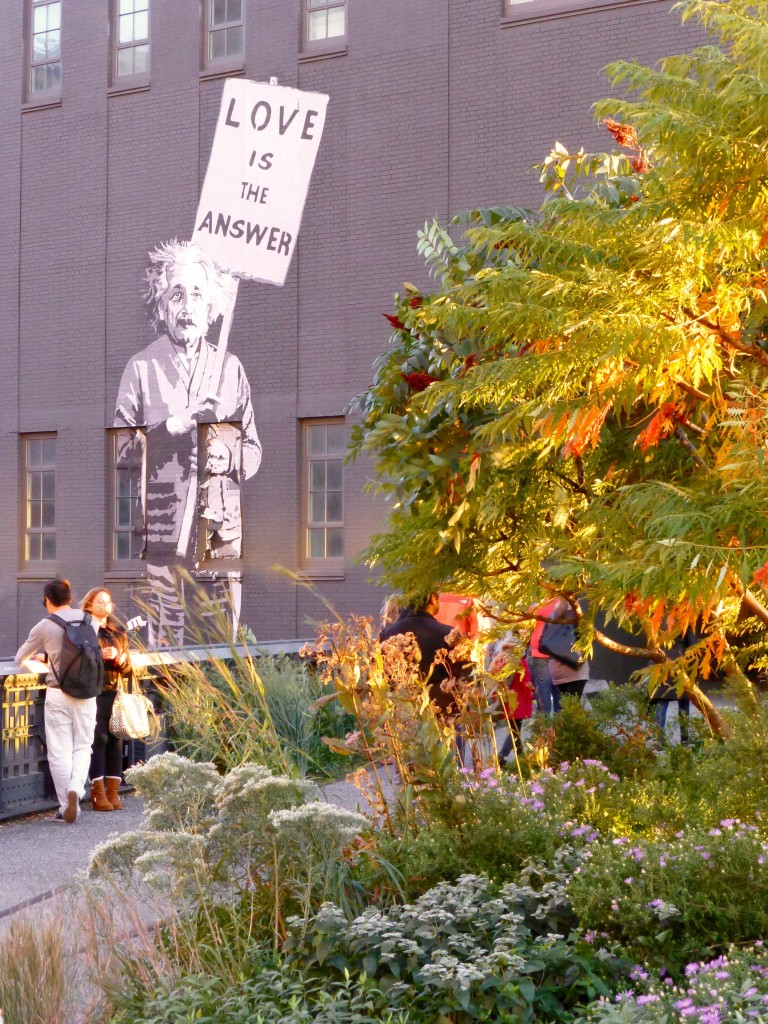 Investment in greening up gets nothing like the funding that goes into building works and roads. This is all part of a bigger debate to do with climate change and the urgent need for more people with the right skills, to manage the living landscape of our towns and cities. With ever more people becoming city dwellers, attractive green spaces become ever more vital - they are indeed “the lungs of the city”.
Investment in greening up gets nothing like the funding that goes into building works and roads. This is all part of a bigger debate to do with climate change and the urgent need for more people with the right skills, to manage the living landscape of our towns and cities. With ever more people becoming city dwellers, attractive green spaces become ever more vital - they are indeed “the lungs of the city”.
